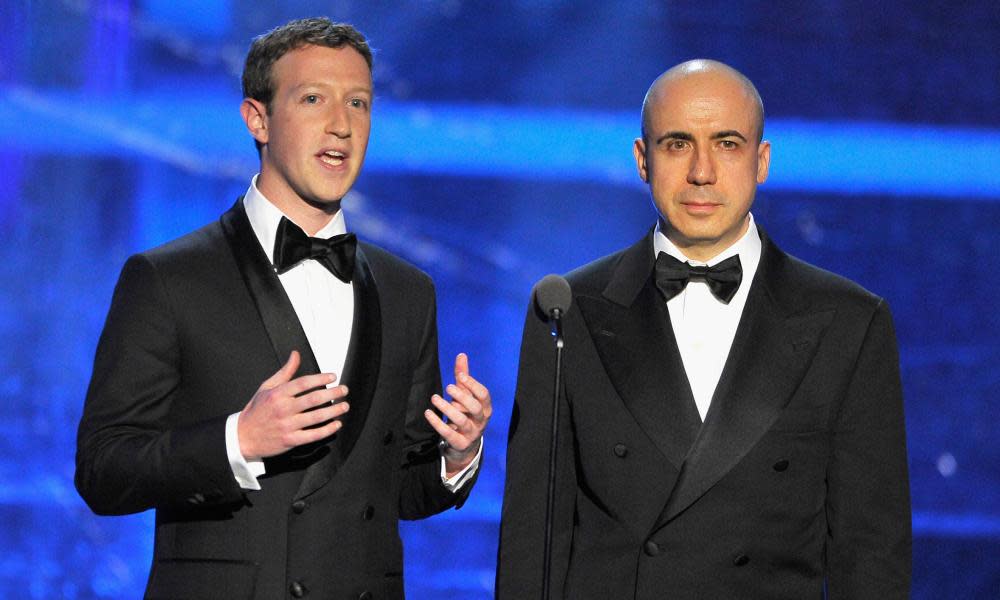Baby-saving drug wins $3m prize in 'Oscars for science'

New techniques for peering into the intricate innards of cells and a discovery that has given hope for infants with a deadly genetic condition are among the developments that are being lauded in this year’s “Oscars for science”.
The 2019 Breakthrough prize will see seven winning discoveries each celebrated with a $3m award for those behind the research to share, with a further six “New Horizons” prizes of $100,000 also going to young researchers in maths and physics and a $400,000-worth award of educational scholarships to a teen prodigy.
Four of the seven top awards are going to academics in the life sciences, among them C Frank Bennett, senior vice president of research at Ionis Pharmaceuticals, and Adrian Krainer of Cold Spring Harbor Laboratory, who developed a drug to treat a condition called spinal muscular atrophy (SMA) – also known as floppy baby syndrome.
SMA is a rare genetic disease that affects motor nerve cells, meaning children with the condition have difficulties walking, eating, drinking and breathing. Many of those with the most severe, and most common, of the four types of SMA die by 18 months of age.
Bennett and Krainer developed the first drug to treat the disease, which works by targeting not the problem gene but another closely related gene. In doing so, it boosts the ability of this secondary gene to produce the all-important survival motor neuron protein. This protein allows motor neurons – which carry signals from the brain to the muscles – to persist. As a result, the tinkered gene essentially compensates for the problem mutation.
Prof Kevin Talbot, head of clinical neurology at the University of Oxford, said Bennett and Krainer’s award was well deserved, adding that the discovery represents a landmark in how neurological diseases are treated.
“Spinal muscular atrophy, a hitherto completely fatal disorder of children, is now resulting in children who are surviving, and that is a triumph,” said Talbot. But, he added, more needs to be done to make it available.
“This is a treatment that has been available for the last 18 months, roughly, and is demonstrated to have a dramatic effect in children,” he said. “It is quite clearly something that works. The problem is that it is phenomenally expensive.”
While Talbot notes the drug, called nusinersen, is available in almost all developed countries, including the US, Canada and Scotland, it has not been approved by the health watchdog, Nice, in England and Wales. “Nice don’t seem to have a way to deal with these rapid moving developments in medicine,” he said. “It is a major problem.”
Launched in 2012 by Russian billionaire Yuri Milner, and with sponsors including Sergey Brin, Mark Zuckerberg and Priscilla Chan, the Breakthrough prize aims to put awards for scientists on a par with those for film stars, with big-bucks prizes and a glitzy ceremony: the star-studded event is set to take place at Nasa’s Ames Research Center in California on 4 November.
Among other winners of the 2019 prizes is Xiaowei Zhuang of Harvard, who has developed new ultra-high-resolution imaging techniques. These have not only helped reveal intricate structures within cells, but also allowed researchers to work out the quantity and distribution of key molecules within cells. Zhuang is currently using her imaging techniques to probe chemical junctions between cells in the brain to help shed light on the development of mental health problems.
A $3m prize was also awarded for fundamental physics, and it is to be shared by Charles Kane and Eugene Mele of the University of Pennsylvania for their work predicting a new type of material that conducts electricity at its surface, but below the surface does not. Just a few years after they were proposed, such materials were discovered – among them certain crystals that can be grown in the laboratory.
“To me, you have these sort of abstract, theoretical-type ideas which are really interesting, but they become interesting and important when they come to life in the real world. That is what has happened,” Kane told the Guardian, adding that these “topological insulators” could prove useful in developing quantum computers.
Kane said he has known since the summer about the prize, but has yet to decide what to spend his winnings on. “That’s a lot of money,” he said. “We don’t have any big immediate plans at the moment – this is not a problem I am used to having.”
A special Breakthrough prize had already been announced for Dame Jocelyn Bell Burnell, the Oxford-based physicist whose discovery of rapidly rotating neutron stars called pulsars was overlooked by the Nobel prize committee, which nonetheless honoured her supervisor for the work.
Bell Burnell has said her winnings will be given to the Institute of Physics to boost diversity in physics through funded PhD studentships. “A lot of the pulsar story happened because I was a minority person and a PhD student,” she said. “Increasing the diversity in physics could lead to all sorts of good things.”

 Yahoo News
Yahoo News 
